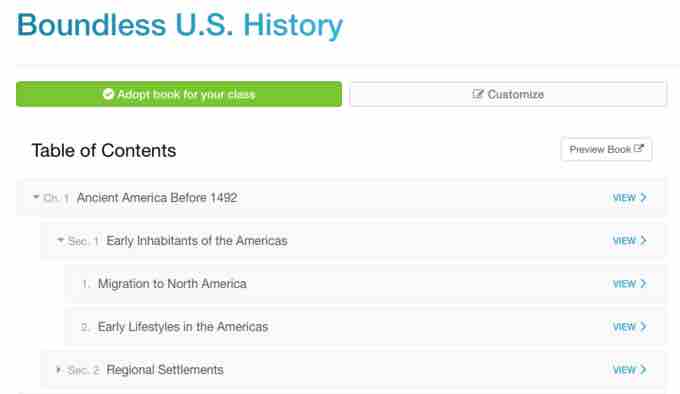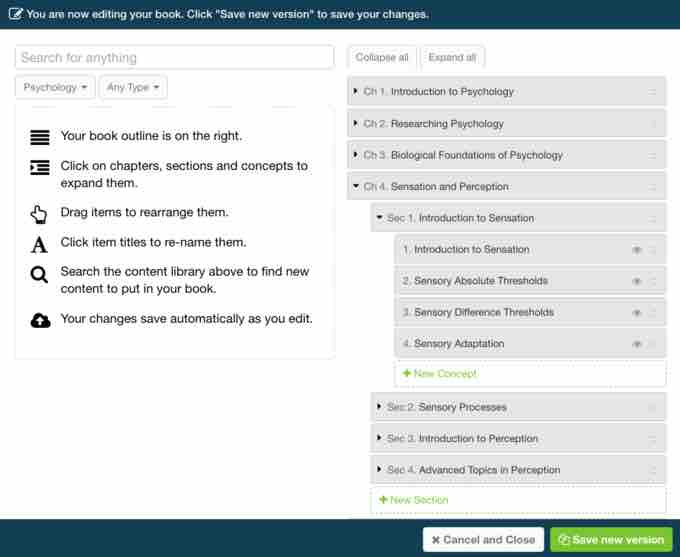Boundless' content is organized into a three-tiered hierarchy: chapters, sections, and concepts.

Example Boundless table of contents
A screenshot of the Boundless table of contents for U.S. History, demonstrating the chapter-section-concept structure and numbering.
Chapters
Chapters are the highest level of organization in Boundless content. For example, a chapter in our U.S. History book is "Founding a Nation." A single chapter will be denoted by a number; for example, the "Founding a Nation" chapter in U.S. History is Chapter 7.
Sections
Each chapter is comprised of several sections. For example, a section in the Founding a Nation chapter is "A New Constitution,” numbered Section 7.2.
Concepts
Within each section is a number of concepts. A concept is the smallest, most basic level of our content and consists of full text, a one-line "brief," key points, and key terms. All of our actual text content resides on concept pages; chapters and sections do not contain any content outside of concepts.
An example of a concept from the "A New Constitution" section is "The Branches of Government," Concept 7.2.3.
The Book Editor
The Boundless book editor allows an educator to customize their own copy of a Boundless book to suit the structure of their specific syllabus or course. Through a simple drag-and-drop interface, the book editor makes it easy to edit a table of contents—to reorder the content, to pull in new material from across our 23 introductory-college subjects, and even to add your own content.

The Boundless book editor
An example of the Boundless book editor, where each level in the table of contents can be dragged to a new location or removed and new chapters, sections, or concepts can be added using the search tool on the left-hand side.